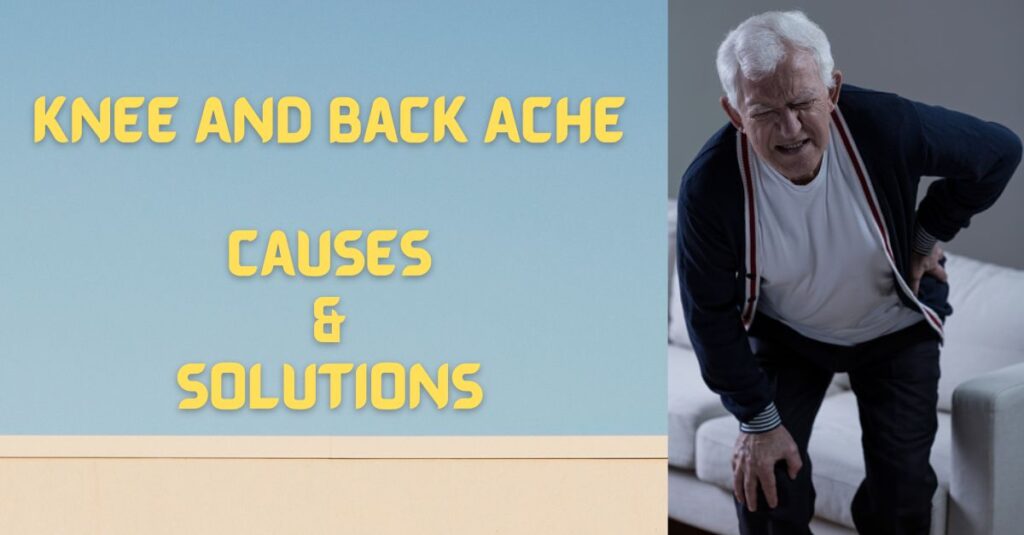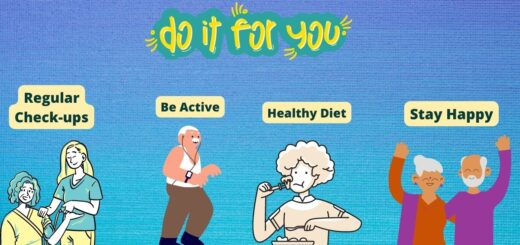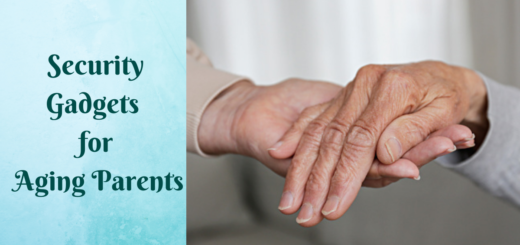Why You Really Get Knee And Back Aches During Old Age And What You Can Do About It

Aging affects our bodies in many ways and gradually deteriorates them leading to weaker overall physiology. Osteoarthritis(OA) is a disorder that causes joint pain and stiffness, usually in the hip, knee, or back. In this article, we will discuss how OA occurs and what happens when it progresses. You’ll learn why the aging process is enough sufficient to wear down our joints, and what activities put constant strain on the bones and muscles of our hips, knees, and ankles.
To live a healthier life with fewer aches and pains, this article covers the common cause of knee and back aches during old age and what you can do about it.
Types Of Back and Knee Aches
As we age, we often experience more aches and pains in our bodies. This is especially true for our knees and back, which can make everyday activities quite uncomfortable. But why does this happen?
There are a few reasons why knee and back aches become more common as we age. First, the discs in our spine start to deteriorate, which can lead to stiffness and pain. In addition, the cartilage in our joints starts to thin out, making it easier for them to become inflamed. And finally, the muscles and ligaments around our joints can weaken, which can also contribute to pain.
So what can we do about all this pain? Well, fortunately, there are a few things that can help. First, regular exercise can actually help to strengthen the muscles and ligaments around our joints, which can take some of the pressure off of them. Additionally, stretching and low-impact activities like swimming can also be helpful in keeping our joints healthy. Finally, if you are experiencing pain that is severe or persists for more than a few days, it’s always best to consult with a doctor or physical therapist to find out what specific treatments may be right for you.
Things To Avoid For Better Back And Knee Health
As we age, it’s important to be aware of the things we do that put unnecessary stress on our backs and knees. Here are some things to avoid for better back and knee health:
1. Sitting for long periods of time. This puts pressure on the discs in your spine and can lead to pain and stiffness. If you must sit for long periods, take breaks often to move around and stretch.
2. Wearing high heels. High heels change the alignment of your spine and put extra pressure on your knees. If you must wear them, do so sparingly and make sure to stretch afterward.
3. Lifting heavy objects without proper form. Bend at your knees, not your waist, to pick up heavy objects. Use your leg muscles, not your back muscles, to lift.
4. Repetitive motions. Things like typing or using a mouse can lead to repetitive strain injuries if done for long periods without a break. Take frequent breaks to stretch and give your body a rest.
5. Poor posture. Slouching puts extra strain on your back and neck muscles and can lead to pain and stiffness. Sit up straight and keep your shoulders down when working.
Keep Your Spine Functioning Optimally
As we age, it’s not uncommon for many of us to experience aches and pains in our knees and back. But what exactly is causing these aches and pains?
A large part of the answer has to do with the way our spine function changes as we get older. Our spinal disks begin to degenerate and dry out, losing their ability to absorb shocks as effectively as they did when we were younger. This can lead to a condition called osteoarthritis, which causes the bones in our joints to rub together, leading to pain and stiffness.
There are things we can do to help keep our spine functioning optimally as we age, however. Staying active and exercising regularly can help maintain the health of our disks and prevent degeneration. Additionally, practicing good posture and using proper lifting techniques can help reduce the strain on our back and knees.
If you’re already experiencing knee or back pain, there are treatments available that can help relieve your discomfort. Physical therapy, for example, can strengthen the muscles around your joints and improve your flexibility. In some cases, surgery may be necessary to repair damage to your bones or joints.
Staying Healthy With Better Sleeping Patterns
Getting enough healthy, restorative sleep is important for dealing with back pain.
Muscles and tissues repair and rejuvenate while we sleep, so if you don’t get enough rest each night, it will be more difficult for your body to recover from an injury.
Inadequate sleep can also cause inflammation in the body, resulting in muscle aches and pains and aggravating inflammatory conditions such as arthritis.
There are many ways to stay healthy as we age, but one of the most important is to maintain good sleeping habits. Getting enough rest is crucial for our physical and mental health and can help reduce the risk of developing age-related diseases.
Unfortunately, poor sleep is a common problem among older adults. According to a recent survey, nearly 60 percent of seniors say they have difficulty falling asleep or staying asleep through the night. This can lead to fatigue, moodiness, and other health problems.
But there are steps we can take to improve our sleep. Establishing a regular sleep schedule is a good place to start. Going to bed and waking up at the same time each day can help regulate our body’s internal clock and make it easier to fall asleep.
Creating a relaxing bedtime routine can also be helpful. Taking a warm bath, reading a book, or journaling before bed can help ease our minds and prepare our bodies for sleep. And making sure our bedrooms are dark, quiet, and cool can create an ideal environment for slumber.
If you’re struggling with insomnia or other sleep problems, talk to your doctor. There are many treatment options available that can help.
Factors Contributing To Back And Knee Pain
Back and knee aches are a common complaint among older adults. Though the causes can vary, there are some common factors that contribute to these pains.
One contributing factor is the natural aging process. As we age, our bodies change and we don’t move around as much. This can lead to stiffness and inflammation in the joints, which can cause pain.
Another common cause of back and knee pain is obesity. Carrying extra weight puts strain on the joints and can lead to pain.
Other common causes of back and knee pain include:
• Arthritis – This condition causes inflammation in the joints, which can lead to pain.
• Injury – An injury to the back or knee can cause pain that may last for a long time.
• Poor posture – Poor posture puts strain on the spine and joints, which can lead to pain.
To Wrap Things Up
We all know that getting older can come with some aches and pains. But did you know that those aches and pains can actually start in your 30s? Yep, that’s right. Your body starts to show signs of aging as early as your 30s, and it only gets worse from there.
One of the most common complaints among people as they age is knee and back pain. This is because the cartilage in your joints starts to break down, causing friction and inflammation. This can be extremely painful and make it difficult to get around.
There are a few things you can do to help ease the pain of knee and back pain as you age. First, try to maintain a healthy weight. Excess weight puts added stress on your joints, which can lead to more pain. Second, get regular exercise. Exercise helps keep your joints flexible and strong, which can help reduce pain. Finally, try using heat or cold therapy to help relieve pain when it does occur.
If you are dealing with knee or back pain, talk to your doctor about other options for treatment. There are a number of different medications and therapies that can help reduce pain and improve mobility.




